In the Eight of Cups image, there is a sense of deep sadness but also resolve; we see a figure walking away from a collection of Cups that remain upright and unspilled. The stick that the figure uses and his cloak suggests a long journey ahead: we intuit that he is not planning to return.
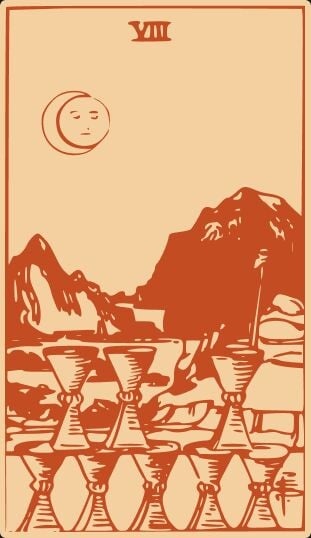
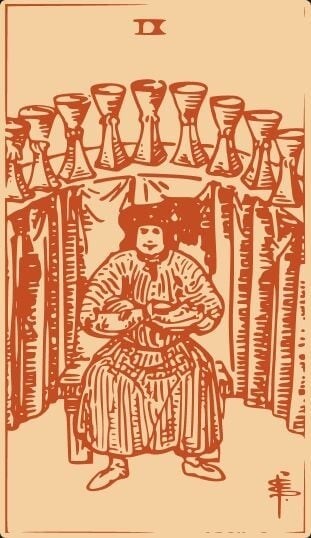
The Nine of Cups depicts a man sitting solidly and comfortable in his seat, safe within the curve of a wall or building. A multitude of Cups are arrayed behind him, and the card exudes a sense of ease and contentment.
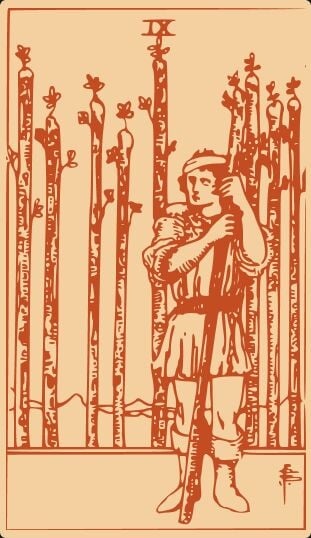
In the Nine of Wands, the Rider Waite image shows a figure who has faced many struggles and, while he’s still standing strong, the bandage around his head indicates that he has sustained injury along the way. The figure is watchful, wary, anticipating further attacks from any angle.
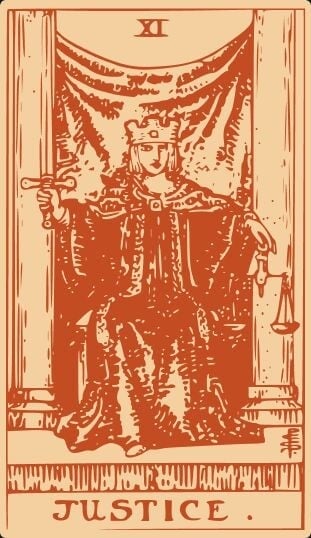
Justice is the card of ultimate karma, with her open gaze, set of scales, and a double-edged sword: we receive exactly what we deserve. Make note that, unlike other traditional depictions of Justice, here the figure wears no blindfold. This points to the core elements of the card: truth, honesty, and clear-sightedness. We must fully recognize the past events that have led to our present situation in order to understand and move beyond it. When Justice appears in a reading it should always be given special attention. Look her fully in the eye, and listen carefully to the message she has for you.
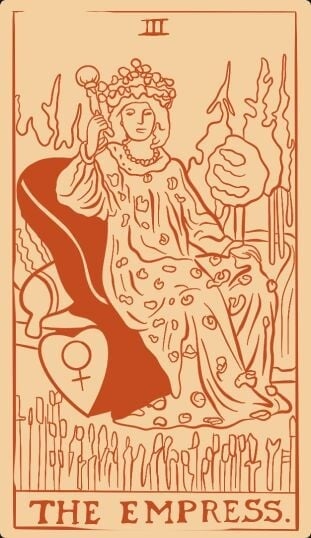
Just as The High Priestess is one archetype of femininity, so The Empress is another: from mystery and the profoundly spiritual, we now move to the Mother Goddess figure. The Empress reclines comfortably on her throne, surrounded by the abundance of the natural world, her body language open and at ease. The water that was hidden in the previous card here flows freely, pooling at The Empress’ feet. Yet her connection to the fertile earth does not denote a lesser power than that of her sister; it is her great strength.
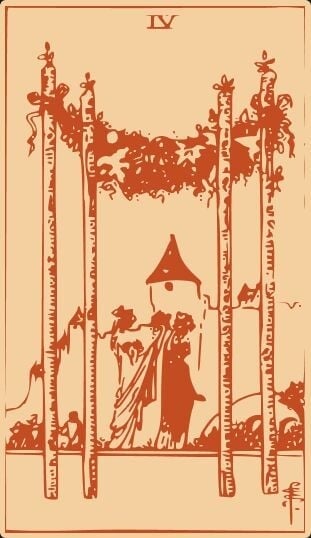
In the Four of Wands, we see two dancers, followed by a joyous troupe of people, leave a castle for a flower-garlanded bower. This is a card of celebration, joy, openness, and freedom; the citizens of the fortress have chosen of their own free will to come forth into the sunshine - the card can be seen as a parallel of The Tower. Here, though, rather than allowing the castle to become their prison, the people have left it of their own accord, carried along by hope, trust, and the will to celebrate the bounty that life has to offer.
